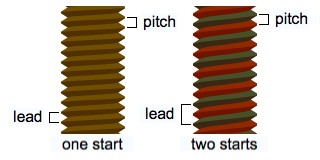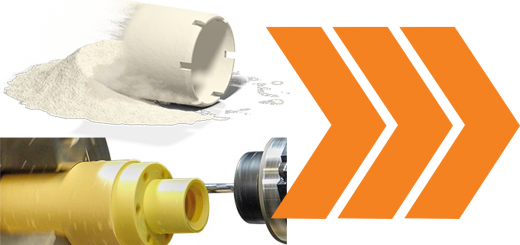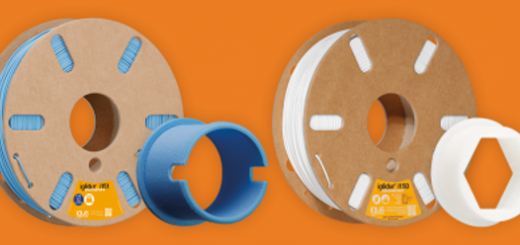Robot Cable Failures Part 2: Strain Relief
By David Sandiland
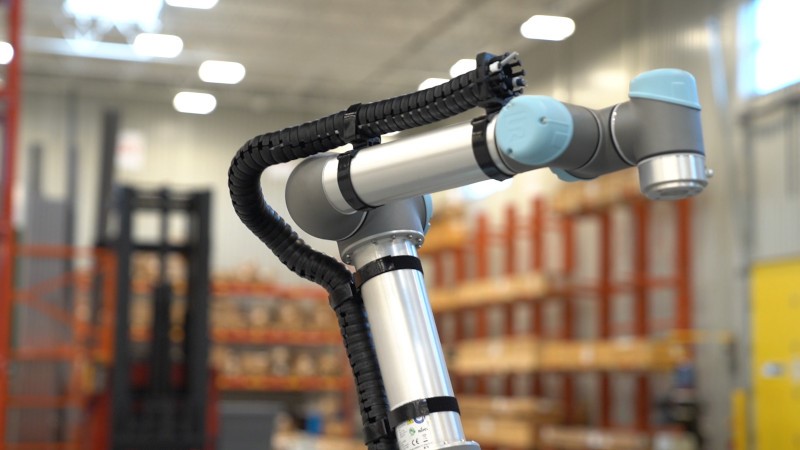
If you read part 1 of this series, then you know choosing the right cable for a job is crucial. But what if you’ve done your due diligence, selected torsion-rated cables for your robot application, and are still seeing cable failures? You may be thinking, “How can this be? I did everything right! David lied to me!” Not so fast. You may have overlooked a crucial step in the installation process: strain relief.
The good news is you’re not alone. Over half of the installations done in the field neglect to properly utilize the strain relief provided. Depending on the type of robot cable management you have selected, your system will come with integrated strain relief. Here are the different types:
Styles of Strain Relief
1. Grommet
Most corrugated hose systems come equipped with a “grommet”. This grommet is a rubber disc with holes drilled into it, specifically to the diameters of your particular cable package. The grommet does a great job holding the cables in place and restraining them from unnecessary movement. But if you need to add or subtract a cable, it can be very difficult and time consuming.
2. Tie Wrap
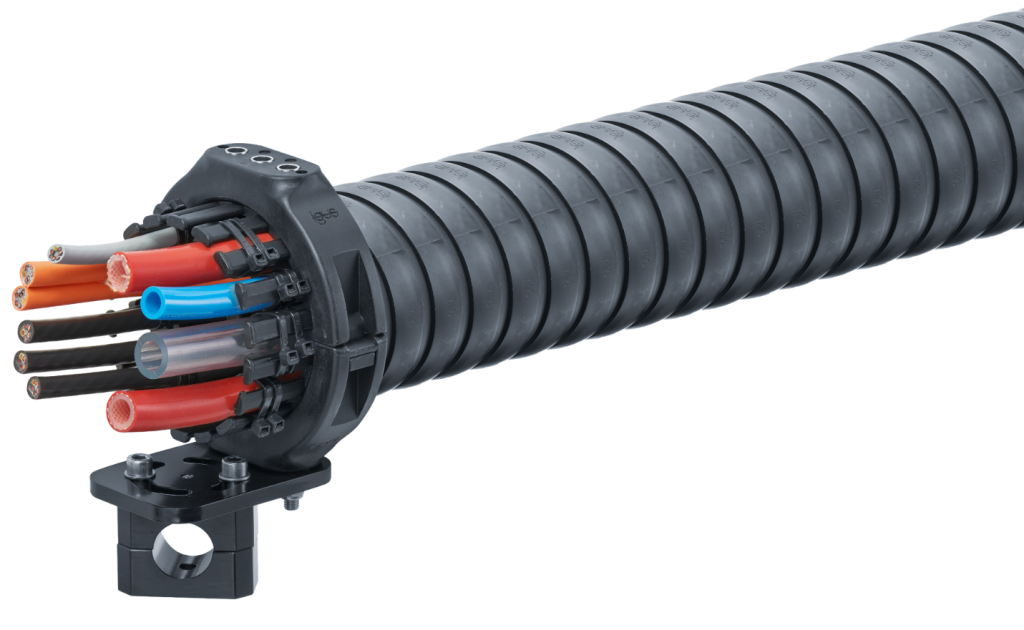
Another style of cable management comes with a type of tie wrap plate. If you have used cable carriers before, you should be familiar with this style of strain relief. When using tie wrap plates, it is important to tie wrap each cable or hose to an individual tie wrap finger. A good rule of thumb is to put two tie wraps at each position, one zipped in one direction and the second in the opposite direction. This greatly reduces the chance of the cable coming loose.
3. Clamping

The last style commonly used with robot cable management is a compression clamp. The cable sits in a fixed lower saddle while a set screw pushes the upper saddle down into the cable and holds it in place. This is by far the most secure way to strain relieve cables and offers the lowest wear factor of the three options available. The limitations of this style of strain relief are space and cable OD. It requires more real estate at the end effector, and very large OD cables and hoses may not fit in the available clamps.
Why use strain relief?
The motion of a six-axis robot is very dynamic, with multiple axes working simultaneously. This symphony of motion puts a great deal of stress on your cables. The job of the cable management system is to protect the cables from getting caught and damaged along the robot arm. This level of protection stops at the end bracket, and it’s at that point that the cables must fend for themselves.
The last line of defense is strain relief. When a cable is not properly strain relieved, its tendency is to try to move back and forth inside the dresspack. This leads to shortening of the service loop near the tool and can result in cable damage and connector failure. Let’s look a little closer at each of these two failure modes:
Cable Damage – There are two ways the cable can be damaged in this instance. The first is outer jacket wear. Quite often, we see preventable wear on the outer jacket of a cable due to a “sawing” motion of the cable as it is pushed back into the dresspack and pulled out again. This constant sawing shaves the jacket material down to the inner elements and leads to premature failure.
This sawing also leads to another form of cable damage: conductor breakage. If the cable is “too” free to move, it is at the mercy of the robot joints and end effector. The motions of a six-axis robot can be violent and the constant pulling on the cable at high acceleration can lead to the copper strands fracturing and in time, complete conductor failure.
Connector Failure – Perhaps you have specified a super duper strong cable and it is able to withstand the rigors of high duty cycles and violent motions. You still may experience failures at the connector. These connections can be very delicate and easily damaged under stress. Now you’re going to tell me that you use an over molded connector specifically to prevent this from happening. It’s a fair point. Over molded connectors do reduce the failure rate at the point of connection between the cable and connector. But they still do fail. A. Lot.
What if I told you, you could save money and time by using a standard field wireable connector? If you simply used the strain relief you were supplied, you could eliminate the need for over molding. Over molded connectors look pretty but are expensive, and in some cases, come with batch quantity requirements. The vast majority of them are manufactured in high volume offshore facilities and are not repairable in the field.
Four Tips for Better Cable Security
1. Use strain relief at axis 1 and 6 only. I know what you’re thinking, what if you are only installing cable management for axis 3 to 6? Do I use strain relief at axis 3? The answer is no. Cables in a robot application see a high degree of twisting known as torsion. If you were to secure the cables at both axis 3 and 6, the cable would not have enough freedom to rotate. It would resist the twisting and exacerbate the mechanical stress being put on it.
2. Include a service loop at the end effector. Now that you are using strain relief, remember to pay close attention to the length of the cable from the exit of the strain relief to the connection point on the tool. You don’t want to spoil all of your hard work by leaving the length too short and ripping the cable out of the connector. Conversely, you don’t want it so long that it catches on the tool or part you are working with.
3. Tie wrapping a bundle of cables together is never a good idea. Quite often, I see a group of hoses and cables tightly bundled together as a form of strain relief. From a practicality standpoint, this makes it more difficult to access a particular cable if it does fail. From a technical standpoint, it increases the likelihood of said failure immensely.
4. During the design phase, take into account the strain relief you are using and how it will affect the path the cables need to take to get to their connection points. It’s important to leave enough “room” for the cables to bend at an acceptable radius.
The Big Finish
The importance of proper strain relief cannot be overstated. Selecting the right cables is critical, but ensuring their safety is what pays the bills. It is also important to have a variety of options that can be tailored to the specific application. If the movements of the robot are particularly violent, you may want the added security of a clamping system. Offering a one-size-fits-all solution for strain relief just doesn’t work.
igus® offers many options for strain relief. The most common are tie wrap plates and chainfix clamps. Both of these options make removing and adding cables quick and easy, particularly cables with pre-installed connectors. Cable replacement can be done 75% faster versus a traditional grommet style strain relief.
If you would like more information on igus’® strain relief options, please reach out to your local territory sales manager or visit igus.ca and engage in a live chat today!

